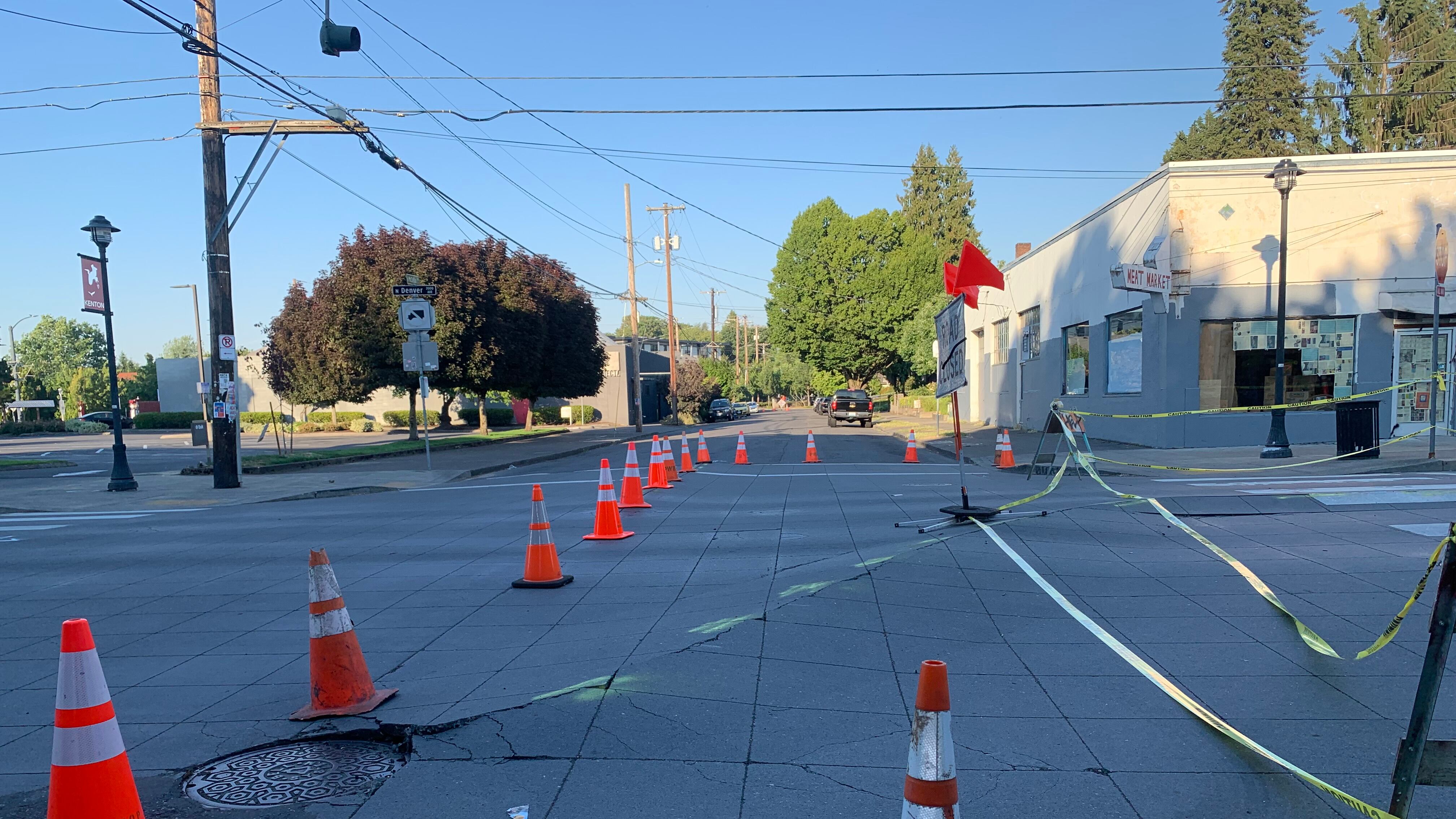How hot was Monday afternoon in Portland? The roads cracked open.
A slab street buckled in the Kenton neighborhood in North Portland around 4:30 pm Monday at the intersection of North McClellan Street and Denver Avenue.
The entire intersection was surrounded by yellow caution tape and orange traffic cones by 7 pm.
Buckling occurs when temperatures are so high that the pavement cracks or ruptures and the road rises along the crack. And Portland was a prime candidate for such damage as temperatures reached 116 degrees Monday afternoon.
The raised crack starts in the middle of McClellan and then curves around to the center of Denver, and then extends about 50 feet down the center of Denver. The highest part of the rupture rises about 18 inches above the rest of the pavement.
The rupture is at the center of the Kenton neighborhood. Surrounding the rupture are stores and restaurants: Eatin’ Alive, Meat Market, Kenton Station and Fino.
Jason Riley was sitting in his Italian restaurant Fino drinking a beer Monday afternoon when he decided to walk outside to see what 112 degrees felt like.
“I was at my restaurant bummed that we aren’t open, and I was having a beer looking at my empty restaurant,” Riley tells WW. “And I was like, ‘Oh my God, it’s 112 degrees, I want to go see what that feels like.’ And I came out and I just heard things popping.”
The popping was the sound of cars bottoming out as they crossed the raised pavement.
Riley called the Portland Bureau of Transportation and workers showed up an hour later, he says. But in the meantime, he put down his beer, grabbed a flashlight, and got on all fours to investigate the rupture. He shined the flashlight down inside the crack.
“I figured it was a sewer line, because it looks like a pipe pushed it up,” Riley says, “but when you look underneath with a flashlight, it looks literally just like compression. It’s really strange.”
PBOT spokesperson Hannah Schafer tells WW the rupture at McClellan and Denver in Kenton is the only report of road buckling the agency has responded to.
“We are still investigating the cause and assessing the damage, but it is likely that this was heat related,” Schafer says. “We will share additional information as we learn more.”

